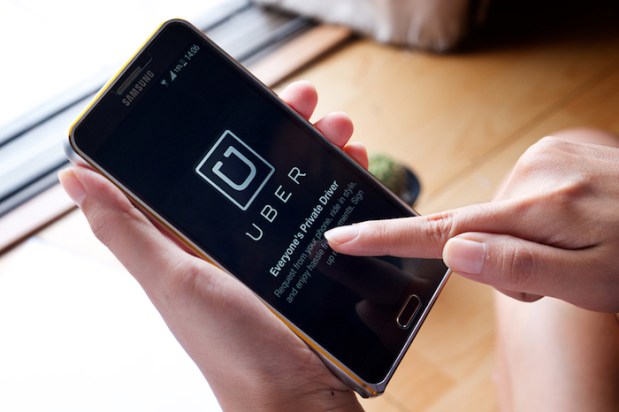Why Uber Can’t Afford To Stop Innovating

Though it might be a relatively young company in the grand scheme of things, Uber is far from the startup phase of its development timeline. While it might still be trying to break into new markets, Uber’s ride-hailing model has proven successful across the globe — no small feat considering the regulatory hoops it had, and still has, to jump through.
But what if the road of accelerated growth and expansion that Uber has been on almost since its inception is about to run out of pavement sooner rather than later?
That’s the implication of a new report from Juniper Research, which juxtaposes the long-term growth prospects of two darlings of the sharing economy — Uber and Airbnb. While both companies are far from any definition of financial peril, Juniper did reveal that shared-space services, like Airbnb and WeWork, a corporate equivalent that leases out communal office spaces, have slightly rosier outlooks over the next few years. By 2019, the shared-space market will generate about $6.1 billion in revenue.
In that same year, Uber will, for the first time, slip below its counterpart in the sharing economy with $5.8 billion over the same period.
The answer for why is complicated — not necessarily for the casual observer to understand but rather for Uber to untangle going forward. Lauren Foye, a research analyst at Juniper, told Entrepreneur that Uber is playing somewhat of a fundamentally different game than Airbnb, as its base unit transactions are worth factors less than renting even a cheap room for a single night. Even though Uber might shuttle more people across the globe than hotel disruptors put them in beds each night, Airbnb has the upper hand as far as revenue goes.
The problem gets stickier, though, when the record of each company’s expansions indicates an area where Uber isn’t even close.
“Uber has not necessarily established itself in China, whereas, with the space industry, we know that, on a global scale, it has done very well,” Foye said. “In 2014, Airbnb saw over 55 percent of its listings in Europe alone, and this has then carried on, and it has become a global business.”
To say Uber isn’t a global business is a bit of a miscategorization, but it’s also disingenuous to think that Uber doesn’t have its own fair share of regulatory roadblocks holding it back from shared-space-esque world domination. The fact of the matter is: Though both Uber and Airbnb had incumbent industries that pushed back against their initial growth, it’s the former and not the latter that still finds itself paying out millions in settlements and defending its practices at the center of an ongoing debate over labor rights and contract employees as drivers in successive states ruminate about the need to unionize.
The confluence of ongoing regulatory battles for its ridesharing service, as well as what looks like an approaching ceiling on the industry’s revenue as a whole, could leave Uber understandably concerned. But there’s a good chance that, instead of being blindsided by these developments, Uber started working long ago on workarounds wherever they could be found.
While events like UberYACHT and UberCHOPPER might attract the derision such gimmicky promotions deserve, the company’s standalone UberEATS app isn’t marketed as a fun-yet-random quirk of a company with capital to burn. Launched in December on a pilot basis in Toronto, the meal delivery service forced Uber to take a sober stance toward a line extension that many never even asked for from the improved taxi service.
“At Uber, the scale-this-to-the-entire-world button can be pressed very easily, and before we do that, we want to make sure we’re actually solving the problems people have,” Jason Droege, head of Uber Everything, which focuses on ferrying everything but people, told Wired.
Uber has many fingers in many different pots contained within an ever-growing retail world, so it shouldn’t be too surprising that, every once in a while, the company ferries puppies around Manhattan or enlists high-priced celebrities to guest drive a car around Los Angeles for the day. However, a possible burst to the ride-hailing economy’s bubble should have everyone wondering if UberEATS and other less gimmicky side projects of Uber are really side projects at all.
Come 2019 and beyond, they might be what’s keeping Uber and the rest of its growing commerce ecosystem going.
